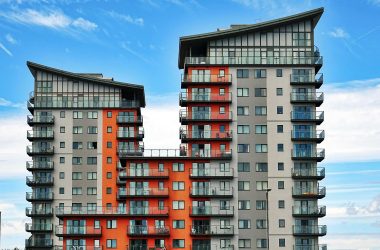When we consider residential investment, most of the attention is focused on houses versus apartments. But how about the missing middle ground – townhouses?
Traditionally, townhouses are two or three-level dwellings that share common walls with neighbours and have small gardens or courtyards.
They can be built in clusters of three, usually in infill sites in Sydney, to up to 100 in larger estates in south-east Queensland.
According to Dennis Vertzayias townhouses have always been in high demand and provide the balance between house or apartment living.
“They’re always designed to fill the void between a house and an apartment, and in my view, there’s always very, very strong demand for them,” said Dennis Vertzayias, director and partner of Laver Residential Projects.
“They’re in keeping with the 2021 lifestyle as they tend to be low-maintenance like an apartment, but have a small outdoor space and, without all that land, they’re significantly cheaper than a house. As long as they’re well-designed, I see them becoming more and more popular in the marketplace, for both investors and their tenants.”
Townhouses are increasingly the choice of some developers
Mulpha Developments has created a complete estate of them, Essentia at Norwest, Sydney.
Executive general manager Tim Spencer says, “COVID-19 has accelerated an underlying trend for people to focus on the complete lifestyle package that their home offers and these townhomes are a good example.”
“They’re based on sustainability, wellness and connectivity. We have seen two price rises this year and the achievement of record prices for the region, exceeding $1.7 million for a townhome.”
Due to their sustainability and connectivity to amenities, townhomes tend to perform well for capital growth.
Location is always critical
Ninety per cent of homes in Melbourne’s Cranbourne, for example, are house-and-land packages, and only 10 per cent are townhouses, says Luke Harris, CEO of The Property Mentors.
That makes them even more desirable.
“Then they can perform very well in terms of capital growth, and vacancy rates can be extremely low as they’re so scarce,” he said.
“People are often keen to downsize into them in the same suburb where they’ve been living on a big family block.”
Demand for townhouses is particularly high in the middle-ring suburbs of cities where there can be resistance to high-density apartments, and free-standing houses are very expensive, believes Clinton Ostwald, director of property advisors Urbis Group.
“People like them as they have a tangible connection to the ground and sense of land, rather than being in the air,” he said.
“That gives people a sense of security.”
“And if they are strata, then the fees are often lower because they tend not to have all the facilities that apartments can have, and they’re low-maintenance, so the running fees are lower. From an investment perspective, that makes them very attractive.”
Popularity with tenants can keep yields healthy, while townhomes often enjoy steady price growth
“Property on land has traditionally enjoyed better capital growth than apartments,” said Jason Field, managing director of National Property Valuers.
“Because they tend to be larger than apartments, often with three bedrooms and room for a workspace – and there are fewer of them – then they’ll have great appeal for investors.”
Sue Williams, Domain ReporterOriginally published on April 7, 2021The original article can be found on Domain here



